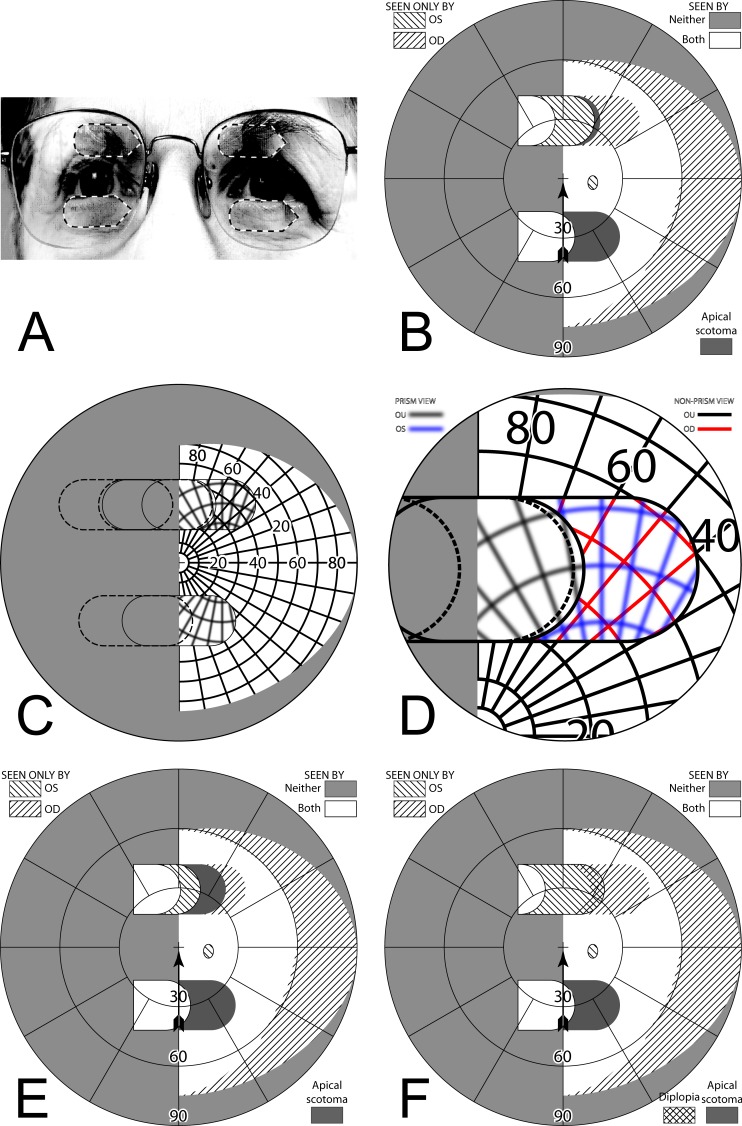Figure 15. .
Offset bilateral horizontal 40Δ peripheral prisms. (A) Spectacles with the upper prisms offset nasally (and outlined for clarity), shown for left hemianopia, though only the direction of the base (illustrated with the sharp points) will be different for right hemianopia. While the lower prisms could also be shifted, many spectacle frames do not provide much room for that, as the lens shape accommodates the flaring of the nose at the bottom. (B) Moving each of the upper prisms 10° (3.5 mm) nasally on its carrier lens (for a difference between them of 20°) essentially eliminates the 22° scotomas in the binocular field. (C) The percept diagram shows that even though the upper prisms are placed differently for each eye, they provide the same view where they overlap, since they have the same power. The view lost to the upper OD apical scotoma is seen in the OS prism, while the area of the OS apical scotoma is seen in the OD nonprism view. (D) Magnified detail of the upper prism area has the monocular views coded in color to more clearly identify the area of visual confusion possibly subject to suppression or rivalry. (E) Shifting each prism only 5° nasally (1.8 mm) still leaves significant scotomas. (F) Shifting each prism 15° (5.4 mm) introduces diplopia and needlessly extends the region of visual confusion. A total relative shift equal to the prism power is optimal.

